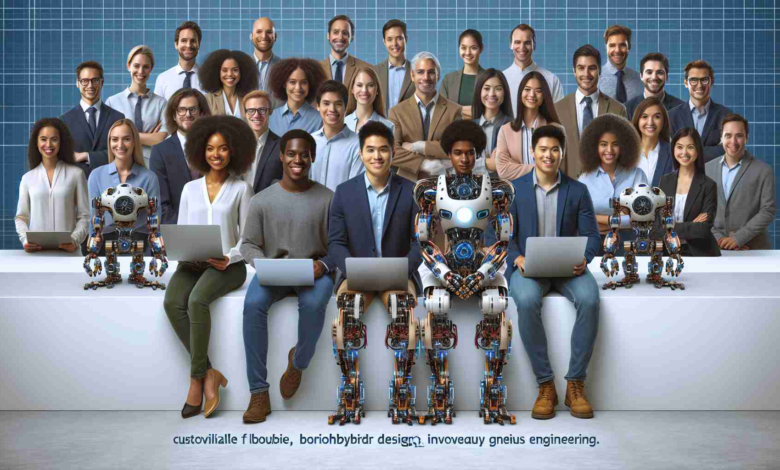MIT Engineers Innovate Biohybrid Robots with Customizable Flexure Design

In an exciting development in robotics, engineers from the Massachusetts Institute of Technology (MIT) have created a novel spring-like device, named a “flexure,” aimed at harnessing the power of muscle tissues to enhance the capabilities of biohybrid robots. This innovation is a leap toward developing robots with movements that closely mimic the natural efficiency of biological muscles, which could revolutionize areas from medical robotics to industrial automation.
Summary: MIT engineers have developed a new flexure device that maximizes the working potential of natural muscles for use in biohybrid robots. This design allows for uniquely tailored robotic skeletons that can be equipped with muscle tissues and potentially change the landscape of robotics, particularly for tasks requiring precise and adaptive movement.
The core fact of these engineering efforts lies in the efficient utilization of natural muscles within robotic designs. While muscle-driven power allows for a level of precision and adaptability that conventional robotics struggle to match, the challenge has been in designing a universal approach that ensures muscle efficiency regardless of the robot’s form.
The newly designed flexure operates as an adjustable skeletal framework that significantly enhances muscle movement without compromising on durability or performance. This is demonstrated by the muscle tissue’s ability to stretch the spring fivefold compared to previous models.
Additionally, MIT’s research highlights the flexure’s capability of measuring muscle endurance effectively. In their experiments, they observed how different contraction frequencies affected the muscle’s performance – a key insight for optimizing the longevity and strength of robotic muscles.
Looking forward, the MIT team aspires to create advanced robots, such as small surgical automata capable of delicate in-body procedures. This ambition is backed by the potential that these minuscule yet powerful muscle-powered robots hold for sectors demanding the highest levels of efficiency and adaptability.
As the exploration continues to adapt and fuse flexures for more sophisticated robotics, this innovation paves the way for a future where biohybrid machines could be as commonplace and as versatile as their purely mechanical counterparts.
Robotic Engineering and Biohybrid Innovations
The field of robotic engineering is rapidly evolving with advances in materials science, sensing technology, and biohybrid advancements. Robotics research at institutions like MIT is pushing the envelope of what’s possible, particularly with the recent development of the novel flexure by MIT engineers. This breakthrough points toward new directions in the creation of biohybrid robots that harness biological tissue for movement, setting the stage for innovations that could span across multiple industries.
Market Forecasts and Industry Growth
The global robotics market is on the rise, with significant growth projected in the coming years. According to industry research, the market is expected to expand due to increasing demand for automation, precision, and efficiency across various sectors including healthcare, manufacturing, automotive, and defense. Medical robotics, in particular, is a rapidly growing segment as robotic technologies demonstrate potential in enhancing surgical procedures, rehabilitation, and patient care.
Issues and Challenges in Biohybrid Robotics
Despite the promise of biohybrid robotics, there are hurdles to overcome. Integration of biological and mechanical components presents complex ethical and biocompatibility challenges. There’s also the ongoing challenge of replicating the intricate control mechanisms found in natural muscle tissues. Furthermore, the longevity and maintenance of living tissues in robotic systems are critical issues that researchers are working to address.
Market Potential for Biohybrid Robots
The application of biohybrid robots extends beyond medical robotics and could disrupt other industries by providing improved dexterity, adaptation, and energy efficiency impossible for traditional robots to achieve. We could see advancements in fields such as biomechanics, environmental monitoring, disaster response, and even space exploration.
Concluding Thoughts
The development of MIT’s flexure-based biohybrid robots not only reflects the brilliance and ingenuity at the forefront of robotics but also showcases a glimpse into the future where the lines between biological organisms and machines are blurred. As the technology matures, we could witness a transformative shift with far-reaching implications, highlighting the need for multidisciplinary collaboration and thoughtful discussion on the future of robotics integration in society.
For more information on the cutting edge of robotics and automation technology, one can explore MIT, a hub of ongoing research and technological breakthroughs.

Natalia Toczkowska is a notable figure in digital health technology, recognized for her contributions in advancing telemedicine and healthcare apps. Her work focuses on developing innovative solutions to improve patient care and accessibility through technology. Toczkowska’s research and development in creating user-friendly, secure digital platforms have been instrumental in enhancing the effectiveness of remote medical consultations and patient monitoring. Her dedication to integrating technology in healthcare has not only improved patient outcomes but also streamlined healthcare processes, making her a key influencer in the field of digital health innovation.



